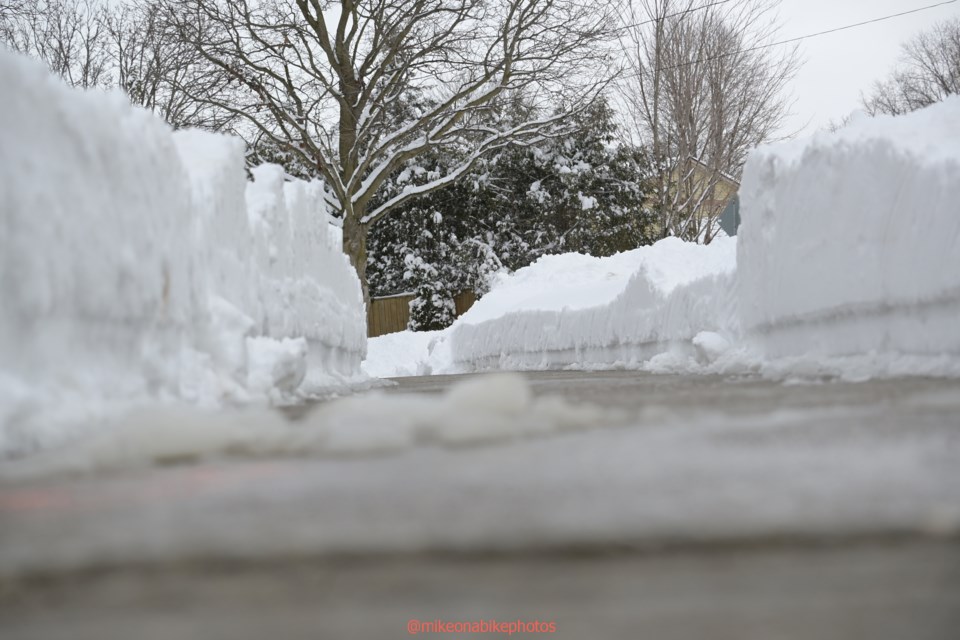The future of Aurora’s windrow removal program, a pilot that was in place for the winter of 2023-2024, could be determined this spring.
Council, sitting at the committee level last week, considered a recommendation from staff that the program continue for the 2024-2025 winter season.
“The pilot program provided significant benefits to seniors and individuals with disabilities in our community,” said Luigi Colangelo, manager of public works for the Town of Aurora, in his report to council. “The program alleviates the challenges faced by vulnerable residents during the winter months, ensuring safe access to essential services and enhancing overall quality of life.”
The town put the pilot project in place last fall.
In order to effectively operate the program, the town hired six additional full-time staff members for this and other operational works throughout the year, including municipal tree maintenance, outdoor rink setup and upkeep, and park infrastructure repair.
The future of the program could hinge on data from this year, but as this was a milder than average season, council is looking for further information, and potentially different delivery models.
“Even with the relatively mild winter experienced this season, the operational efforts of our staff have remained diligent in executing snow removal duties,” said Colangelo. “The frequency of plowing roads and seniors’ driveways has been limited, only three times throughout the winter season.”
Advocating for a re-think was resident John Hartman who delegated to council ahead of their own discussion.
While he said he supported benefits to seniors and persons with disabilities, he questioned the cost-benefit to residents – particularly with just 1,100 windrows cleared over the course of the pilot in the first three snow events.
“We hired six staff for six months for $230,000 as per the report, or $38,000 per person for a part-time gig,” he said, asking council to “think before we accept this.”
He suggested a comprehensive survey of residents to properly gauge community feedback, outsourcing the services, and providing it on a registration-fee structure.
“How about saying ‘we tried, it was too costly,’ and move onto more important town investments like parks, playgrounds, new movable grandstands, safety zones, a better online registration system for recreational activities, speed traps, and other real town priorities?” he asked.
Ward 4 Councillor Michael Thompson agreed a survey would be useful in determining how effective the program was as it was “such an unusual year.”
Due to the mild winter, the new hires, for instance, did not see a lot of time out battling the windrows, and Councillor Thompson said more information would be welcome on how these staff were working elsewhere and how it provided “operational savings or benefits” to the town, to see how “we’re best able to utilize the people we brought on as a result of the mild winter.”
“When the program was approved by council, we were unaware of how many residents would apply for the program,” said Colangelo. “In 2008, only 39 residents applied for the program, so we were figuring 300. But then when we received 1,100 applications that’s part of the ask for the six seasonal staff. In total, when this report was created, we only had gone out three times. Since then, we went out two additional times at the end of March. We used seasonal staff and full-time staff for a total of nine trucks and they each had over 100 in change locations, depending on which ward they were in.”
Ward 1 Councillor Ron Weese also had financial questions.
Had this been a normal winter with more frequent clearing, Councillor Weese said it would have come to a cost of $60 per windrow and thought this would be well above that.
“We dodged a bullet by the winter this year,” he said, before asking staff to look into more “efficient” delivery models.
User fees could be a better path forward, noted Ward 6 Councillor Harold Kim.
“I am a proponent of user fees and can complement that with us being able to facilitate contractors to assist residents who need windrow service,” he said. “I would lean toward that. It is hard to make this decision right now without all the information in place. If we had to make a decision right now, I would not be in favour of approving this for next season, but as was mentioned earlier, if you can fill in those gaps in terms of how do we monetize the part-time hours times efforts doing the pruning and all the other activities – if we can monetize that, how much of their time was allocated to windrows, it will give us a better picture in terms of which model is the best model to use going forward for Aurora.”
Brock Weir is a federally funded Local Journalism Initiative reporter at The Auroran

